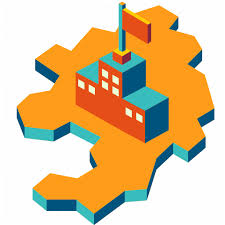References:
[1]
Alcamo, J., et al.
(2007). Future long-term changes in global water resources driven by socio-economic
and climatic changes, Hydrological Sciences, 52, pp. 247- 275.
[2]
Antao, C.et al. (2007).
An integrated water, sanitation and health strategy for the municipality of Ruiru,
Kenya. School of International and Public Affairs (SIPA), Columbia University, New
York.
[3]
Balance, T. and S.
Tremolet, (2005). Private sector participation in urban water supply in Sub- Sahara
Africa, quoted in: Agro Paris Tech and Group SUEZ: Management Contracts in Developing
Countries, pp .8-9.
[4]
Barkatullah, N. (1999).
Pricing, Demand Analysis and Simulation: An Application to a Water Utility.
[5]
Barlow, M., (1999).
The water crisis and the commoditization of the world’s water supply. Special report
International Forum on Globalization Sausalito: CA.
[6]
Bouwer, H., (2002).
Intergrated Water Management for the 21st Century. Problems and solutions.
[7]
Burrows, et al. (2004)
Water and Sanitation: The Education Drain. Brooks, N. and Sethi, R., (1997). The
Distribution of Pollution: Community Characteristics and Exposure to Air Toxics
Journal of Environmental Economics and Management, 32, 233-250.
[8]
Bryan, E. et al. (2009).
Adaptation to Climate Change in Ethiopia and South Africa: Options and Constraints
Environmental Science and Policy, 12 (4).
[9]
Catherine Dion (1998).
"Monitoring of Pollution Regulation: Do Local Conditions Matter?" Journal
of Regulatory Economics; 13: 5-18.
[10] Chartres, C. and Varma, (2010). Out of water. From Abundance
to Scarcity and How to Solve the World’s Water Problems USA: FT Press.
[11] Channing L. Bete Co. Inc., (1981). The ABC's of Water Conservation.
[12] Choldin, H., (1978). Urban density and pathology. Annual
Reviews, Sociology, Vol 4, pp 91- 113.
[13] DFID, United Nations Development Programme (UNDP) and World
Bank (W.B)., (2002) Linking Poverty Reduction and Environmental Management: Policy
Challenges and Opportunities, Discussion document prepared for World Summit on Sustainable
Development.
[14] Diwakar H and N Nagaraj (2002), Impact of Water Pollution
on Food Security and Environment: Bearing the Brunt, Wasteland News, August-October.
[15] Euromonitor Global Market Research Blog, (2010).
[16] European Commission (2007b). Water Scarcity and Droughts.
Second Interim Report. DG Environment, June 2007.
[17] European Commission (2007c). Addressing the challenge of
water scarcity and droughts in the European Union. Communication from the Commission
to the Council and the European Parliament, COM (2007)414.
[18] Fisher, A., Corbet, A.., and Williams, C. (2008). The relation
between the number of species and the number of individuals in a random sample of
an animal population." Journal of Animal Ecology, 12: 42, 58. 763, 764.
[19] Food and Agricultural Organization (FAO) and Jim Kundell.,
(2008). Water Profile of Kenya, in: Cutler J. Cleveland (eds.) Encyclopedia of Earth
Washington, DC: Environmental Information Coalition, National Council Science and
the Environment.
[20] Gleick, Peter., (1993). Water in Crisis. New York: Oxford
University Press
[21] Gleick, P., (1999). The world’s water, the biennial Report
on water Resources. Washington DC: Island Press.
[22] Government of Karnataka, (2000). Rural Water Supply and
Sanitation in Karnataka-Strategy Paper 2000-2005, Rural Development and Panchayat
Raj Department, Bangalore. Government of Karnataka, (2001). Study on Rapid Sector
Assessment in Karnataka, Project Planning Monitoring Unit, Rural Development and
Panchayat Raj Department, Bangalore.
[23] Government of Karnataka, (2002-03). Annual Report on Rural
Development and Panchayat Raj Department: Bangalore.
[24] Government of Karnataka, (2002)). Report of the High-Power
Committee (HPC) for Redressal of Regional Imbalances, Bangalore.
[25] Government of Karnataka, (2004), State of Environment Report
and Action, Department of Ecology, Environment and Forest: Bangalore.
[26] Gray, H., and Alde, M., (2007). Are Rural–Urban Migration
and Sustainable Development Compatible in Mountain Systems Mountain Research and
Development Vol 27(2), pp 119–123. Herrero, M., Ringler, J., Van de Steeg, P., Thornton,
T., Zhu, E., Bryan, A., Omolo, J. Koo, A, Notenbaert., (2010). Kenya: Climate variability
and climate change and their impacts on the agricultural sector, ILRI report to
the World Bank for the project “Adaptation to Climate Change of Smallholder Agriculture
in Kenya.
[27] Hoekstra, A., and Chapagain, A., (2007) Water footprints
of nations: water use by people as a function of their consumption pattern. Water
Resource Management, 21, pp. 35-48.
[28] Intergovernmental Panel on Climate Change, (2001): Impacts,
Adaptation and Vulnerability. Janakarajan, S., (2002). Conflicts over the Invisible
Resource: Is there a Way Out? in Moench, M., Elizabeth Caspari and Ajay Dixit (eds.)
Rethinking the Mosaic: Investigations into Local Water Management, published by
NWCF and ISET: USA.
[29] Joshi, D. and Fawcett, B., (2001). “Water Projects and
Women’s Empowerment” Paper for 27th WEDC Conference: People and Systems for Water,
Sanitation and Health, Lusaka, Zambia.
[30] Joyce, J., Granit, J., Hall, D., Haarmeyer, D., Lindstorm,
A., (2010). The impact of global Financial Crisis on financial flows to the water
sector in Sub Saharan Africa. New York: Oxford University Press.
[31] Kaluli, J., Wangeci., C and P. G., (2009). Home Biomechanical
and Environmental Engineering Department, Jomo Kenyatta University of Agriculture
and Technology, Nairobi, Kenya.
[32] Kandji, S., (2006). Drought in Kenya: Climatic, Economic
and Socio- Political Factors, New Stand points (November-December), pp. 17-19.
[33] Karanja, G., and Fissiha T., (1990) Soil and Water Conservation
in Bibliography with Annotations (Nairobi, Kenya: University of Nairobi, Department
of Agricultural Engineering; and Stockholm, Sweden: Swedish Agency for Research
Cooperation with Developing Countries (SAREC)).
[34] Karanja, J., and Ng’ang’a E., (2008). Sanitation and Hygiene
in Kibera Slums, Nairobi: Women Concerns and Nurses Promotional Tools.” Roskilde
University, Denmark.
[35] Karanja, J., (2011). Improving water provision in Nairobi
through control of non- revenue water Global Water Summit 2011. Global Water Intelligence.
pp.212–213.
[36] Kenya Population and Housing Census, (2009). Ruiru District,
Kiambu County.
[37] Kimani, M., Wangui, E., and. Ngindu., A (2007). Quality
of Water the Slum Dwellers Use: The Case of a Kenyan Slum, Journal of Urban Health:
Bulletin of the New York Academy of Medicine, Vol. 84, No. 6 (November), pp. 829-838.
[38] Kothari, C.R., (2004) Research Methodology, Methods and
techniques, New Age International (P) Ltd.
[39] Krejcie and Morgan, (1970). Determining sample size for
Research Activities Educational and Psychological Measurement, vol.30, pp.607-610.
[40] Malesu, M., Oduor, A., and Odhiambo, J., (2007). Green
Water Management Handbook, Rainwater harvesting for agricultural. Production and
Ecological sustainability. World Agro- forestry centre.
[41] Marble, K., and Sheard, R., (1999). A Guide to Residential
Water Conservation.
[42] Martin, K. and Acuna, C., (2002). SPSS for Institutional
Researchers.” Lewisburg, Pennsylvania: Bucknell University Press.
[43] MENA Report., (2007). Making the most out of scarcity,
accountability for Better Water Management in the Middle East and North Africa.
[44] Mogaka, H.; Gichere. S.; Richard D.; and Rafik Hirji (2006).
Climate Variability and Water Resources Degradation in Kenya: Improving Water Resources
Development and Management (Washington, DC: The World Bank, World Bank Working Paper,
No. 69).
[45] Molden, D., (2008). Water Security for food security; “Findings
of the Comprehensive assessment Sub- Saharan Africa,” Africa world water week, Tunis
pp 20.
[46] Moriasi, D., (2007). Hydrologic and Environmental Impacts
of Conservation Practices in Oklahoma Agricultural Watersheds. United States Department
of Agriculture, Agricultural Research Service. P.1.
[47] Murray, C., and Lopez A., (1996). The Global Burden of
Disease: A Comprehensive Assessment of Mortality and Disability from Diseases, Injuries
and Risk Factors In 1990 and Projected to 2020. Cambridge, Massachusetts: Harvard
School of Public Health.
[48] Naumann, M. (2003) Current Status of Water Sector in the
Czech Republic, Working Paper Nealis, J., (2010). Ruiru District Population booklet.
[49] NEMA. (2010). Water availability and management in Kenya.”
Booklet.
[50] Ngigi, A., and Macharia D., (2006). Kenya: Water Sector
Policy Overview Paper, IT Power East Africa.
[51] Nyangeri, E., and Ombongi, S., (2007). History of Water
Supply and Sanitation in Kenya in Juuti, Katko and Vuorinen. (Eds) Environmental
History of Water (IWA Publishing, 2007), Section until Kenyan independence: pp 271-280.
[52] Ofwat., (2006) Security of supply, leakage and the efficient
use of water: 2005/6 report, UK. Orodho, A. (2002). Participation trends in secondary
school Education in Kenya. Emerging scenario and policy directions. Kenyatta University:
Nairobi.
[53] Postel,. L., Daily. C., and Ehrlich, P., (1996). Human
appropriation of renewable fresh water. Science pp 271-785.
[54] PPD Consultants Ltd. (2007), Ruiru-Juja Water and Sewerage
Company Ltd. Three Year Transitional Business Plan, Nairobi.
[55] Policy Development and Studies Branch, (2010). Water scarcity
and humanitarian actions, key emerging trends and challenges OCHA Occasional Policy
Briefing Series No. 4.
[56] Polit, F., (1995). Nursing Research Principles and Methods.
United Nations Development Programme (UNDP), Human Development Report Millennium
Development Goals. A Compact among Nations to end Human Poverty, published by UNDP.
[57] Rajamarthanda (1998), Behavior of Depth to Water Level
between 1978 -97 in Karnataka State, Department of Mines and Geology, Bangalore.
[58] Redhouse, D. P., Roberts and R., Tukai., (Water Aid, 2004a).
Every One’s a Winner: Economic Valuation of Water Projects. Discussion Paper. August.
[59] Revenga, C., Johnson, N., and Echeverria, J., (2001). Managing
water for people and nature Science. 292 (May 11), 1071-1072.
[60] Sherri, J., (2009) Research methods and Statistics, A Critical
Thinking Approach. USA, Wards worth: Cengage Learning.
[61] Smakhtin, V., Revenga, C., and Döll, P., (2004) Taking
into account environmental water requirements in global-scale water resources assessments.
Comprehensive Assessment Research Report 2. Colombo, Sri Lanka: Comprehensive Assessment
Secretariate.
[62] Sobel, J., (2004) Pathogen-Specific risk factors and protective
factors for acute Diarrhoeal illness. The Chicago Press. London.
[63] Wafula, P., (2010) Lack of Investment in Water Sector Leaves
Kenyan Towns Parched, Business Daily Nairobi, Kenya: Nation Media Group, p. 2.
[64] Wambua, S., (2004). Water Privatization in Kenya. Global
Issue Paper, Heinrich Boll Foundation, No.8 pp. 12-15.
[65] Water Aid., (2001). Looking Back: The Long-term Impacts
of Water and Sanitation Projects. Water Aid. (2005). National Water Sector Assessment,
Madagascar.
[66] Water Aid. (2006a). Country Information, Madagascar.
[67] Water Aid. (2006b). Wider Impacts of Water, Sanitation
and Hygiene Education Projects. Issue Sheet.
[68] Water and Sanitation Program - Africa (2007). Citizen Report
Card for Water in Urban Areas. Nairobi.
[69] White, G., (1999). Drawers of Water Domestic water use
in East Africa. London The University of Chicago Press.
[70] World Health Organization and UNICEF, (2012). Progress
on drinking water and sanitation: United States:
[71] World Bank., (2001) World Development Report 2000/2001:
“Attacking. Poverty.” Washington, DC
[72] World Health Organization (2012) United Nations International
Children’s Emergency Fund (UNICEF), (2012). Joint Monitoring Programme for Water
Supply and Sanitation.
[73] Winpenny, J., (2011). Financing water security for economic
growth in Africa. A paper for the African Development Bank. July 2011 pp. 39.
[74] World Bank, (1996). African water resources: Challenges
and Opportunities for sustainable Development. World Bank Technical Paper No. 331.

 Lessons Learned from the Quality of Care ProjectAuthor: Roy ChikwemDOI: 10.21522/TIJMG.2015.SE.21.01.Art001
Lessons Learned from the Quality of Care ProjectAuthor: Roy ChikwemDOI: 10.21522/TIJMG.2015.SE.21.01.Art001 Employees Perspective on Internal Branding Mechanisms. Case Study of a Multinational Organization in GhanaAuthor: Mary Akweley CobblahDOI: 10.21522/TIJMG.2015.SE.21.01.Art002
Employees Perspective on Internal Branding Mechanisms. Case Study of a Multinational Organization in GhanaAuthor: Mary Akweley CobblahDOI: 10.21522/TIJMG.2015.SE.21.01.Art002 The Role of Internal Branding for Corporate Success. Employees Perspective from a Multinational Organization in GhanaAuthor: Mary Akweley CobblahDOI: 10.21522/TIJMG.2015.SE.21.01.Art003
The Role of Internal Branding for Corporate Success. Employees Perspective from a Multinational Organization in GhanaAuthor: Mary Akweley CobblahDOI: 10.21522/TIJMG.2015.SE.21.01.Art003 Costing and Financial Management: The Financial Impact of Investment of Technology in Motors Manufacturers (T) LTDAuthor: Fatema RehmanDOI: 10.21522/TIJMG.2015.SE.21.01.Art004
Costing and Financial Management: The Financial Impact of Investment of Technology in Motors Manufacturers (T) LTDAuthor: Fatema RehmanDOI: 10.21522/TIJMG.2015.SE.21.01.Art004 Implications of Water Development Projects on Community Welfare; The Case of Eloumden I Mbankomo Sub Division, Mefou and Akono DivisionAuthor: RooseveltDOI: 10.21522/TIJMG.2015.SE.21.01.Art005
Implications of Water Development Projects on Community Welfare; The Case of Eloumden I Mbankomo Sub Division, Mefou and Akono DivisionAuthor: RooseveltDOI: 10.21522/TIJMG.2015.SE.21.01.Art005 A Critical Analysis of the Effects of Strategic Management on Small Scale Businesses; A case study of Patent Medicine Stores in Abuja, NigeriaAuthor: Akinsola FadeyiDOI: 10.21522/TIJMG.2015.SE.21.01.Art006
A Critical Analysis of the Effects of Strategic Management on Small Scale Businesses; A case study of Patent Medicine Stores in Abuja, NigeriaAuthor: Akinsola FadeyiDOI: 10.21522/TIJMG.2015.SE.21.01.Art006
